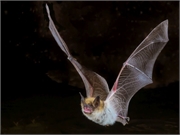- Skip Storing This Everyday Product in the Fridge Door
- Green Tea + B3 Pairing May Boost Brain Health
- Navigating Your Midlife Crisis: Embracing New Possibilities
- City Raccoons Showing Signs of Domestication
- Mapping the Exposome: Science Broadens Focus to Environmental Disease Triggers
- One Week Less on Social Media Linked to Better Mental Health
- Your Brain Changes in Stages as You Age, Study Finds
- Some Suicide Victims Show No Typical Warning Signs, Study Finds
- ByHeart Formula Faces Lawsuits After Babies Sickened With Botulism
- Switch to Vegan Diet Could Cut Your Greenhouse Gas Emissions in Half
Track Viruses, Not Animal Carriers, to Prevent Future Pandemics

Trying to identify animals that are most likely to transmit viruses to humans may not help prevent future pandemics, researchers say.
Instead, the focus should be on specific types of viruses and how they spread, they suggest.
The current coronavirus pandemic is believed to have originated in bats, and most emerging infectious diseases are zoonotic, meaning that they’re spread from animals to humans, according to researchers from the University of Glasgow in Scotland.
This pandemic shows the serious health and economic threat that zoonotic viruses pose, so it’s crucial to learn more about them.
This study found little variation in the proportion of zoonotic viruses in 11 major orders of birds and mammals, and that animal orders with more species hosted more viruses overall and more zoonotic viruses.
The findings challenge the belief that certain animal reservoirs, such as bats, pose a heightened risk of spreading viruses to humans, according to the study published April 13 in the Proceedings of the National Academy of Sciences.
Instead, the characteristic traits of the viruses, rather than their animal hosts, will be the more useful predictors of zoonotic transmission, the researchers said.
“The recognition that several high-profile viruses originated from bats triggered tremendous interest in whether there was something special about their ecology or immune systems, which makes their viruses disproportionately likely to infect humans,” said Daniel Streicker, a senior research fellow at the University of Glasgow’s Institute of Biodiversity, Animal Health and Comparative Medicine.
“Our finding that the number of zoonoses that have emerged from bats is about what would be expected for any mammalian group of their size casts doubt on the idea that traits of bats produce viruses with a heightened propensity to infect humans,” Streicker said in a university news release.
“To know if there is anything special about bats, we now need to understand whether the bat viruses that do jump to humans cause more severe disease or spread better among humans than viruses from other animals, which is currently uncertain,” he said.
More information
The U.S. Centers for Disease Control and Prevention has more on zoonotic diseases.
Source: HealthDay
Copyright © 2025 HealthDay. All rights reserved.










